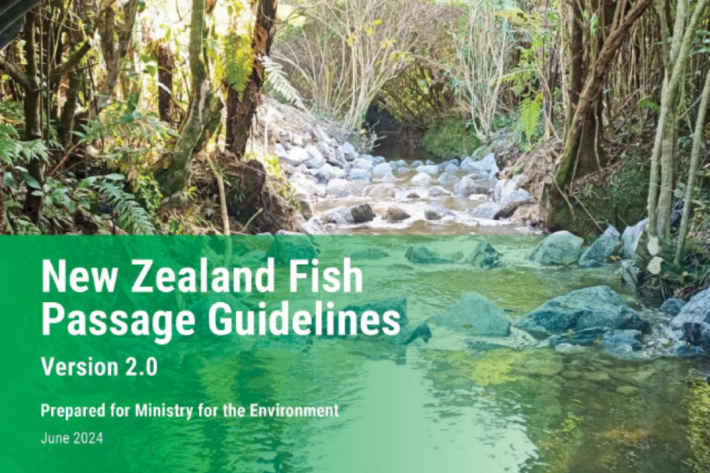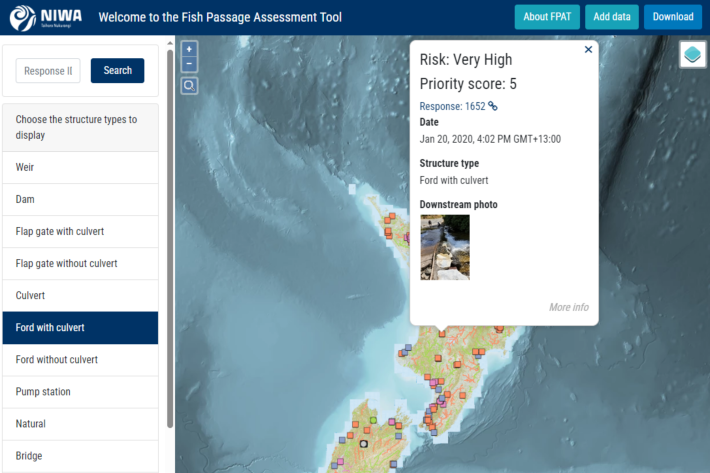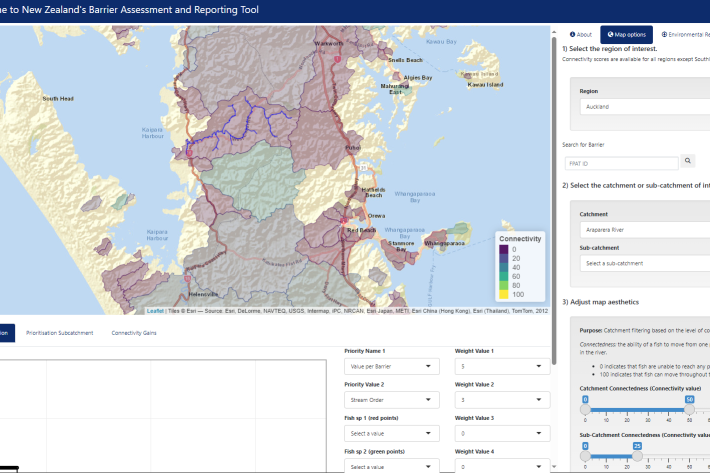Many of New Zealand’s most widespread fish species (e.g., whitebait and eels) undertake significant migrations between marine and freshwater habitats as part of their life cycle. They require access to different habitats to support reproduction, rearing, feeding, and for refuge.
Instream infrastructure, such as culverts, weirs and dams, can delay or prevent fish movements when adequate provision for fish passage is not provided in their design, installation and maintenance. The consequence is a reduction in the distribution and abundance of some of our most iconic and valued freshwater species.
Fish Passage research at NIWA is conducted within the Freshwater Species and Ecology Management Programme which aims to create the knowledge base and tools needed to ensure healthy, viable populations of native freshwater species.
Recent projects and studies currently underway include:
- Fish Passage Assessment Tool: an easy to use, practical tool for recording instream structures and assessing their likely impact on fish movements and river connectivity.
- Barriers to freshwater fish migration: Nearly half of New Zealand’s river network has restricted access for migratory fish
- Barrier Assessment & Reporting Tool: a new web tool to calculate catchment connectivity and help prioritise instream structures for remediation
- Piharau/kanakana (lamprey) fishways: Designing effective fishways to allow passage of piharau/kanakana
- How fast can fish swim? Quantifying how well our native fishes can swim
- The Bio-Acoustic Fish Fence: Investigating the effectiveness of an acoustic bubble-screen in minimising the movement of pest fish
Understanding fish passage - FAQs
Assessment tools & design guidelines:
-

New Zealand Fish Passage Guidelines
Recommended standards for the design and restoration of instream infrastructure to provide for fish passage -

Fish Passage Assessment Tool
Software Tool/ResourceAn easy-to-use system for recording instream structures and assessing their likely impact on fish movements and river connectivity. -

Fish Passage Barrier Assessment Reporting Tool (BART)
Software Tool/ResourceAn interactive webtool to support barrier prioritisation and fish passage environmental reporting. -

Guidelines for monitoring fish passage success
A manual detailing evidence-based methods suitable for evaluating the effectiveness of fish passage solutions.
